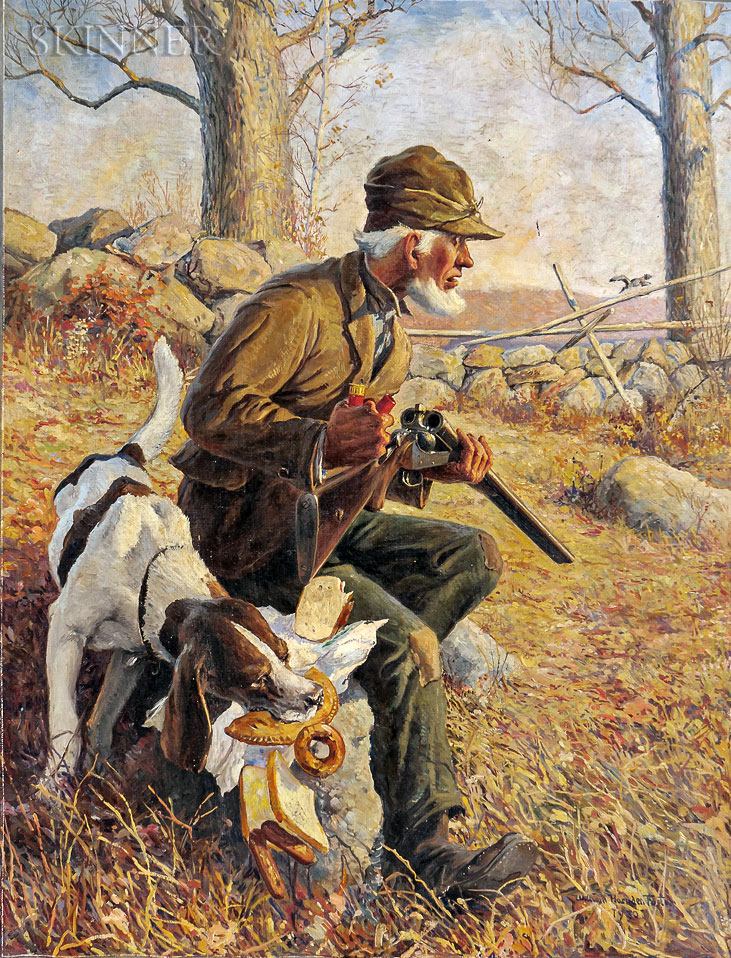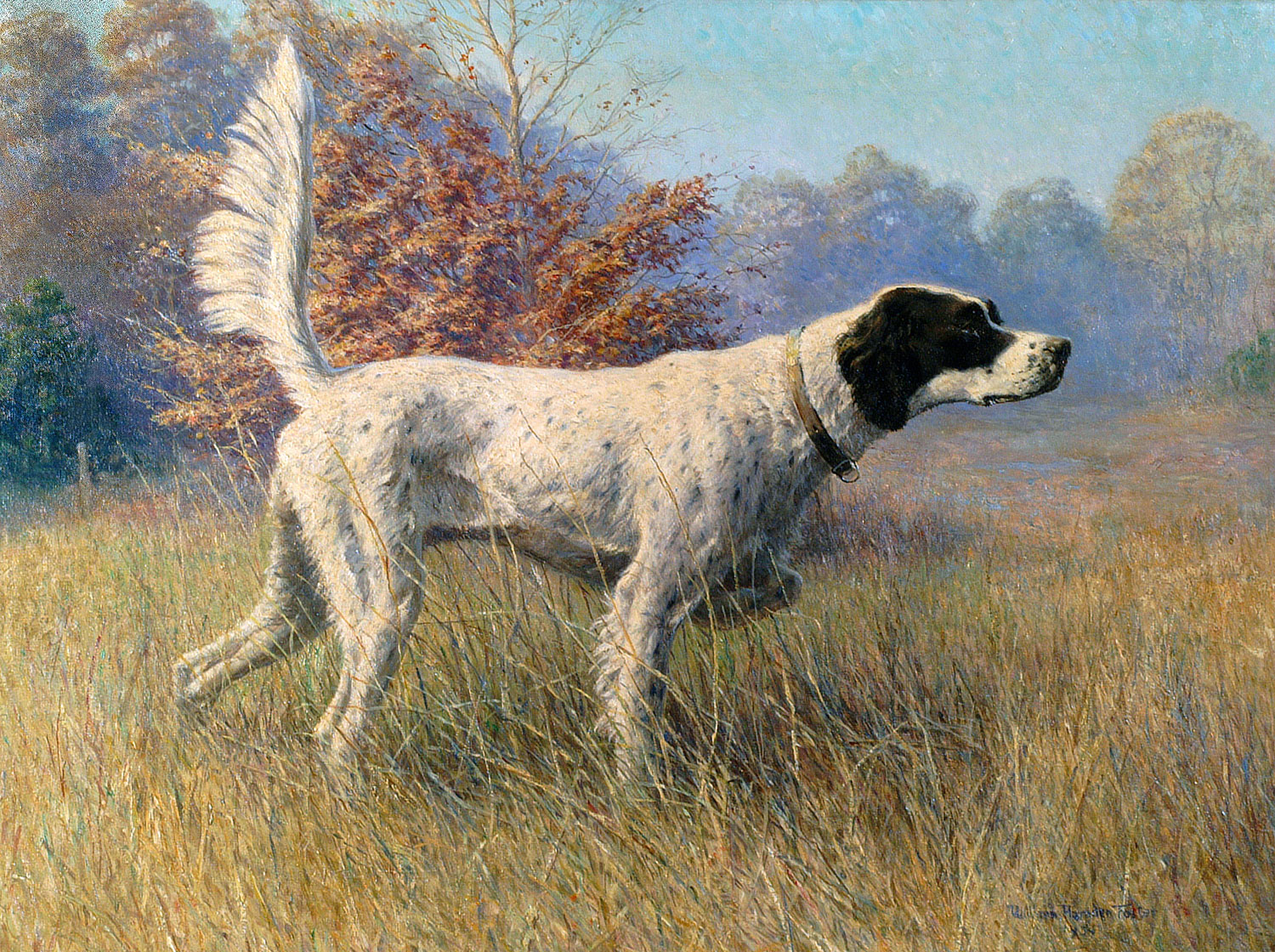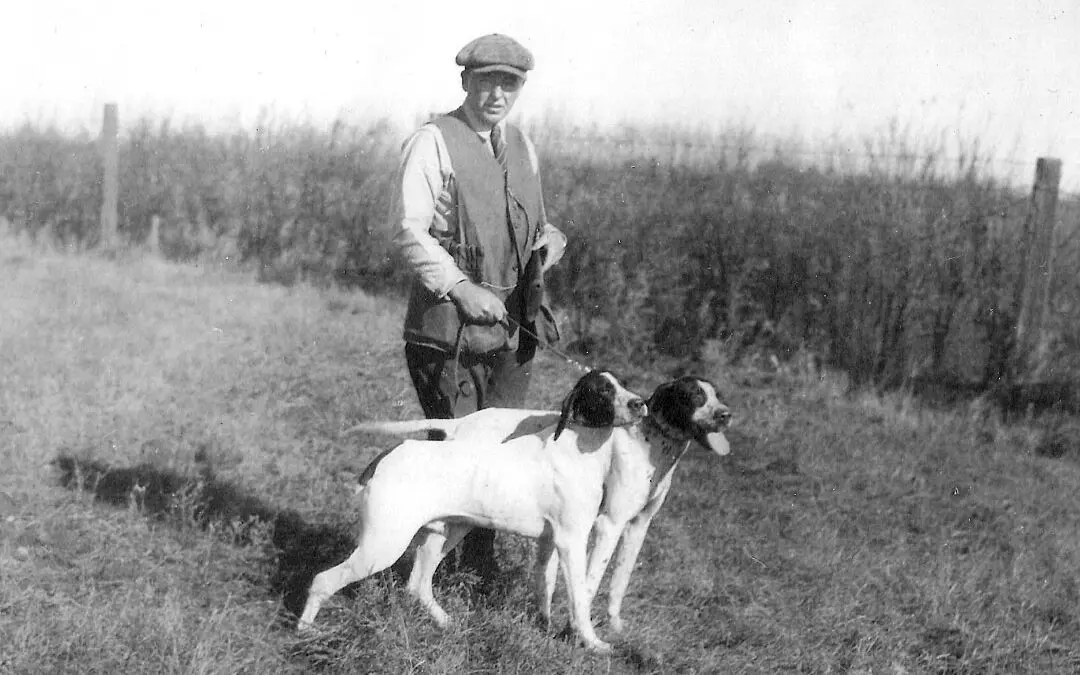Some years ago, I was bird-hunting in Idaho with the brothers Wayment: Shawn, a veterinarian who blogs as the “Bird Dog Doc,” and Andy, an attorney who also happens to be the author of Idaho Ruffed Grouse Hunting. One afternoon, walking through a golden seam of mountainside aspens—“quakies,” in that part of the world—Andy asked me, “Who do you like better as a grouse hunting writer, Burton Spiller or George Bird Evans?”
I replied that in general I preferred Spiller but that it’s sort of an apples-and-oranges comparison. Spiller was more of an old-timey yarn-spinner whose tone remained consistent throughout his career; Evans was a highbrow essayist whose later work was tinctured with a bitter sense of loss. Evans also had a tendency to sermonize, although this, again, became more prominent as time went on. (It’s no coincidence that many people, including yours truly, consider Evans’ first book, The Upland Shooting Life, his best.)
At that point, having qualified my answer to within an inch of its life, I told Andy that my favorite grouse hunting writer isn’t Evans or Spiller. It’s William Harnden Foster—who, in his classic New England Grouse Shooting, said just about everything that needed to be said (everything important, anyway) about grouse dogs, grouse guns and grouse behavior as it relates to the hunter. I added that I couldn’t count how many times I’d written something about grouse hunting that I thought was pretty smart, only to go back and find that Foster had said essentially the same thing, only a hell of a lot better.
Andy was a little surprised that I rated Foster so highly, although he admitted that as a Brittany owner—his Britt, Misti, was busting the brush as he spoke—his opinion was colored by the low opinion Foster seemed to hold of the breed.
“What you have to remember,” I said, rising to Foster’s defense, “is that when New England Grouse Shooting came out in 1942, the Continental breeds had barely gained a toehold in America. I don’t think it was that Foster disliked the Brittany; I just think he’d had very little experience with the breed—certainly not enough to persuade him that it brought anything to the party that the pointer and the English setter didn’t.”

Stolen Lunch by William Harnden Foster.
Bill Foster, whose oft-used full name suggests a stuffiness that by all accounts was totally foreign to him, was one of the most diversely talented, influential and just plain interesting figures in the annals of American field sports. From 1921 to 1936 he served as Editor of the Boston-based National Sportsman and Hunting and Fishing magazines, two of the most prominent outdoor publications of the day. In addition to his editorial duties, he wrote columns and features and did numerous cover paintings.
Here’s one of the many footnotes-to-history that seem to accrue around Foster like autumn leaves: In 1925, he let a friend use one of these cover paintings, “The Moose Hunter,” to jazz up a little mail-order catalog he’d been putting out. The friend’s name was L.L. Bean; Foster’s was the first art ever to grace the cover of the Bean catalog.
Before he was a writer or an editor, in fact, Foster was an artist. And while he possessed the talent and training to paint literally anything (he was well-known during his lifetime as a painter of steam engines), bird dogs were clearly the subject matter closest to his heart. He was the most celebrated sporting dog artist of his era—and one of the finest of any era, the peer in every respect of Tracy, Osthaus, Rosseau, et. al. He painted virtually all of the prominent New England pointer-setter field trial winners of the 1920s and ’30s, and at the time of his death in 1941 had a standing commission to paint each year’s National Champion for the DuPont calendar.
But Foster didn’t simply paint dogs; in the fullest and truest sense, he lived them. In a region regarded as an English setter “hotbed,” he was a dyed-in-the-wool pointer man who owned, campaigned and bred some of the finest pointers in the Northeast. It goes without saying that he hunted over the same dogs he ran in trials; it was Foster, after all, who made the famous declaration “In New England there should be no distinction between a field trial dog and a shooting dog. The former is merely the latter on public display.”
Foster judged field trials, also, and it was in that capacity that he made the acquaintance of a young man, also a pointer fan, who would go on to become the greatest gundog breeder of the 20th century: Robert G. Wehle. Wehle considered Foster his most important mentor and liked to tell the story of their first meeting.
“It was at a field trial on Cape Cod in 1939,” he recalled. “I’d entered Elhew Midge in the shooting dog stake, but I was late getting to the trial because a storm the night before had knocked down all the signs to the grounds. Midge’s brace had already gone off by the time I finally arrived, but the field trial committee allowed me to run her as a bye at the end of the stake.
“Well, by then it was almost dusk, and after being seeded with quail all day the course was full of birds. Midge had nine perfect finds to win hands down. After the trial, one of the judges came over to congratulate me. He was a dignified, middle-aged gentleman, and I was only 19. ‘Where did you get such a marvelous dog?’ he asked. That was my introduction to Bill Foster.”
As students of the Elhew bloodline know, it was Foster who urged Wehle to breed Elhew Midge to a breathtakingly handsome male called Lexington Jake (a dog Foster had painted a stirring portrait of, not coincidentally). Wehle took Foster’s advice—and laid the genetic foundation for everything that came afterwards.

Sports Peerless Pride by William Harnden Foster.
“Breeding Midge to Lexington Jake,” Bob always insisted, “was the single most important event in the development of the strain. And it was all due to Bill Foster.”
Foster was also the co-inventor of skeet, the shooting game first described by Foster and Charles Davies in the February, 1926 issue of National Sportsman. The basic concept dated back to 1915, when Foster, Davies and Davies’ brother, Henry, cobbled together a 12-station trapshooting course in an attempt to simulate the angles and flight patterns of flushing grouse. The winner of the $100 prize offered by the magazine for the best name went to a reader who suggested skeet, an Old Norse word meaning “to shoot.”
Foster was one of the first to tout the merits of the 28-gauge as a grouse gun, calling it, in a turn of phrase I’ve always loved, “Light, but spiteful.” It was a little disillusioning, then, to learn that his affinity for the 28 was at least partly the result of a nasty flinch he’d developed, presumably from shooting thousands of rounds of skeet.
In another of those footnote-to-history episodes, in 1933 Foster hired a green but eager 23-year-old to serve as his editorial assistant. The kid learned fast, though. Within a couple years he’d been promoted to Managing Editor, and when Foster retired in 1936, he became the top dog. His name? H.G. “Tap” Tapply. Tapply went on, of course, to author “Tap’s Tips,” the enormously popular column that ran in Field & Stream for approximately forever.
The tragic irony of New England Grouse Shooting is that Foster didn’t live to see it published. In the autumn of 1941, while walking in the gallery at the New England Field Trial Championship in Scotland, Connecticut, he collapsed from a heart attack and was pronounced dead at the scene. He was only 55.
Still, you have to admit that it was a pretty good way to go. Perhaps Bob Wehle said it best: “He did everything with style.”

